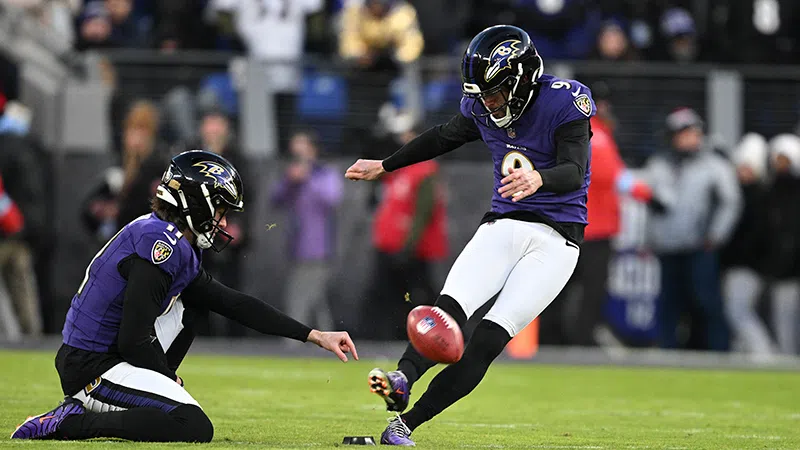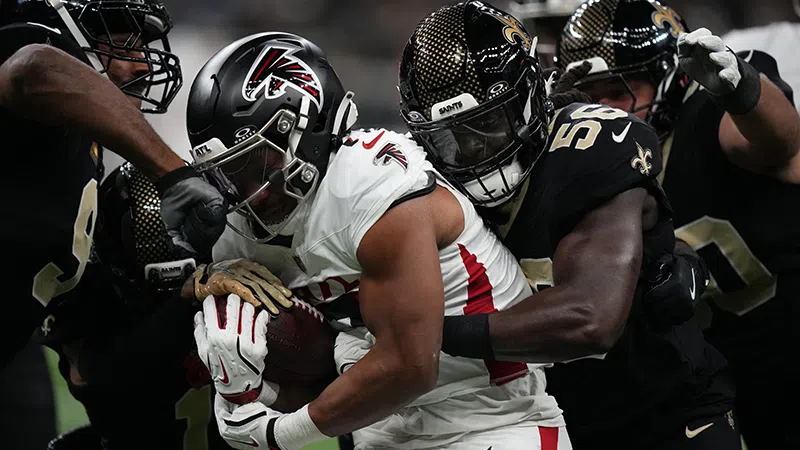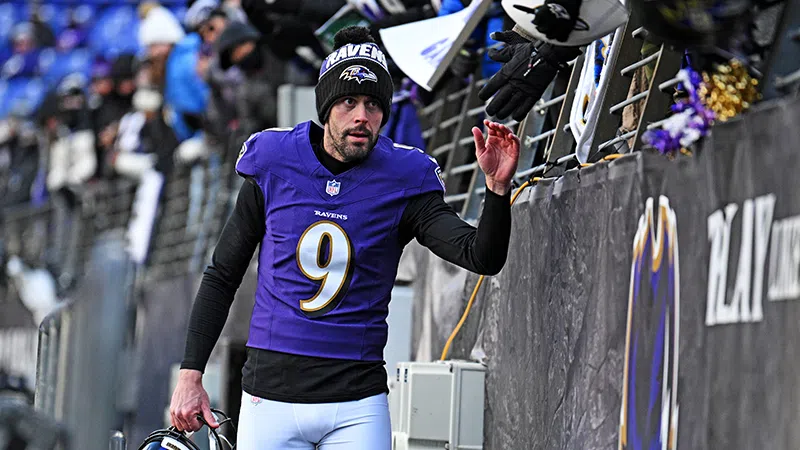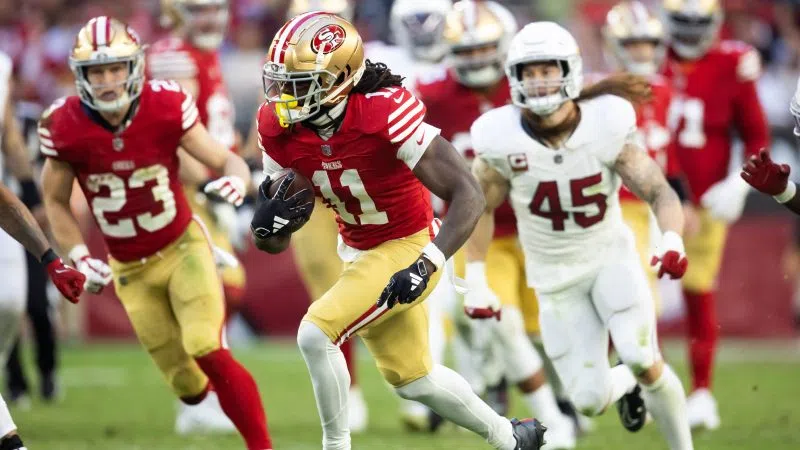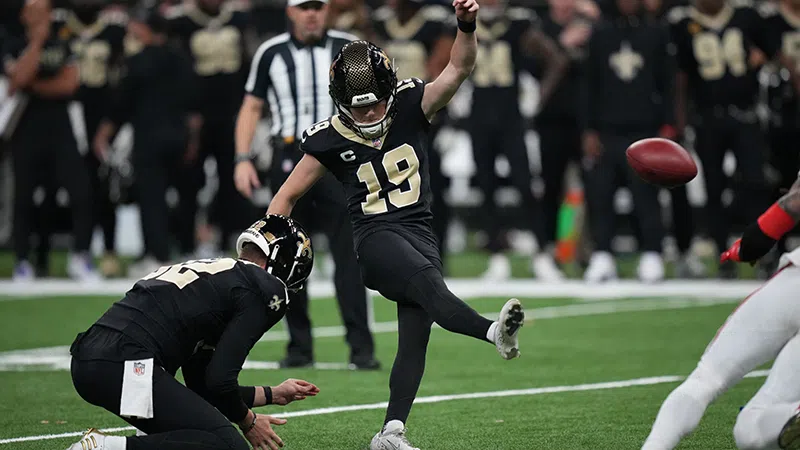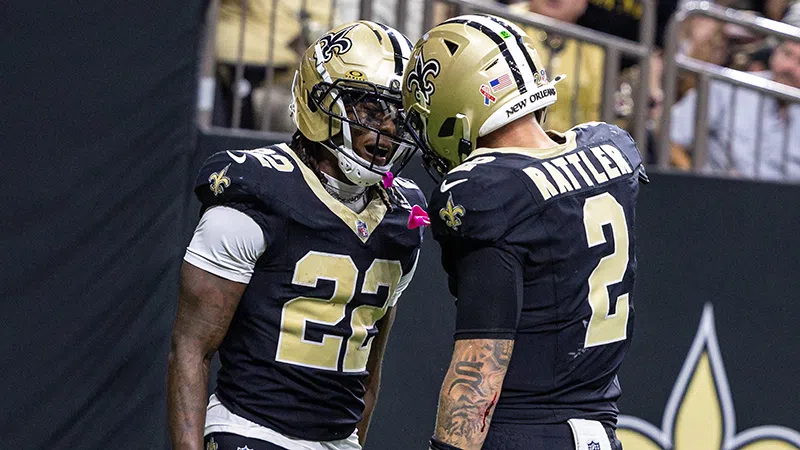
Stephen Lew-Imagn Images
By Ross Jackson
The biggest offensive play of the day for the New Orleans Saints in their Week 5 win against the New York Giants was an 87-yard touchdown pass from quarterback Spencer Rattler to wide receiver Rashid Shaheed.
THE NEED FOR SHAHEED!
87 yards to the house 🔥
📺 CBS pic.twitter.com/7144MlHuXw
— New Orleans Saints (@Saints) October 5, 2025
The play, a two-man route, was a variation off of a tendency the Saints had been building for weeks with a specific 13-personnel (one running back and three tight ends) first down look the Saints had shown numerous times dating back to Week 2 against the San Francisco 49ers.
New Orleans deployed several iterations, including multiple plays leading up to the Giants game for weeks before turning the concept on its head. Before the 87-yard bomb, the Saints ran six rushing plays out of 13-personnel on first down in previous weeks, including twice against the Giants before uncorking the big play. Let’s break down how the Saints and head coach Kellen Moore established a tendency and then broke it at the perfect time.
Week 2 – First and 10 against the San Francisco 49ers / 13-personnel – 2-yard run by running back Kendre Miller
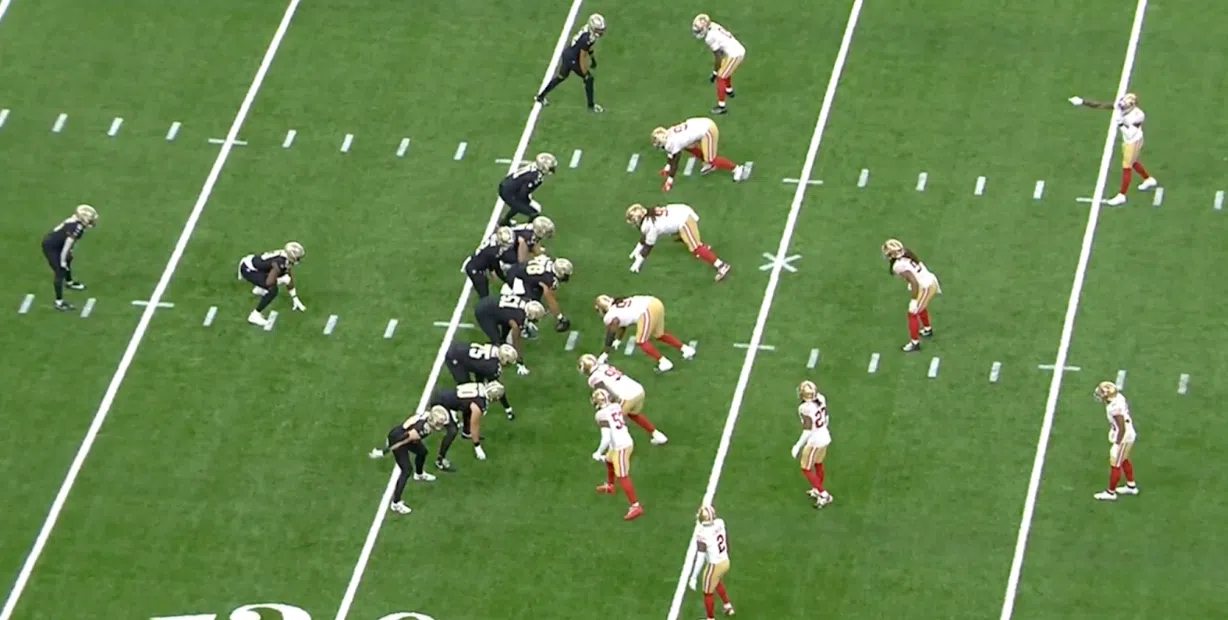
This was the first time the Saints showed this look on a first down in the season. Two tight ends (Moliki Matavao and Jack Stoll) are at the bottom of the photo lined up beside right tackle Taliese Fuaga. The third tight end, in this case Juwan Johnson, is lined up at fullback. Having one of the three tight ends in the backfield will be a common theme throughout this study.
In this iteration, there is no motion and the tight ends are lined up to the boundary side (the side closest to the out of bounds line). This rule ebbs and flows with each play call.
Nothing fancy happens here pre-snap. Rattler snaps the ball, turns and hands it off to Miller, who gains a modest two yards. But this play sets into motion a touchdown three weeks later.
Week 4 – FIrst and 10 against the Buffalo Bills / 3-personnel – 2-yard run by running back Alvin Kamara
Pre-Motion Look
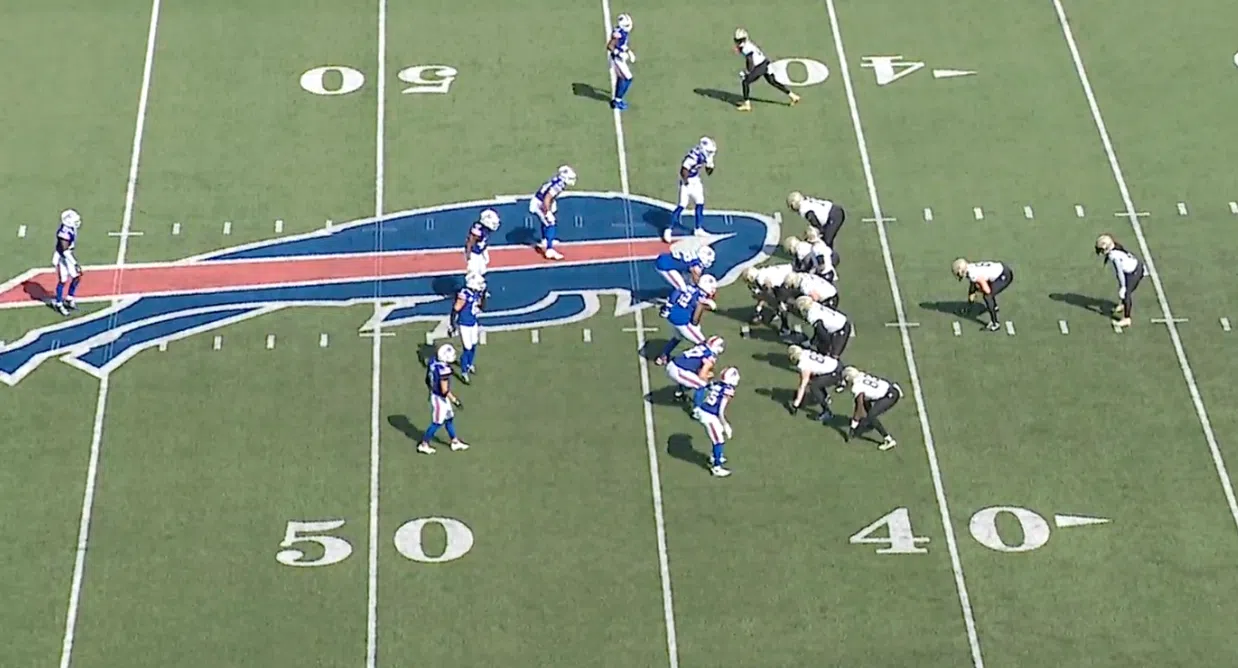
Two games later, we see the return of the 13-personnel look on first own. A lot of the same principles are seen here. The two tight ends are on the boundary wide with the lone wideout (Shaheed) on the field side and there’s a third tight end in the backfield. This time, before the snap, the Saints add a small wrinkle.
Post-Motion Look
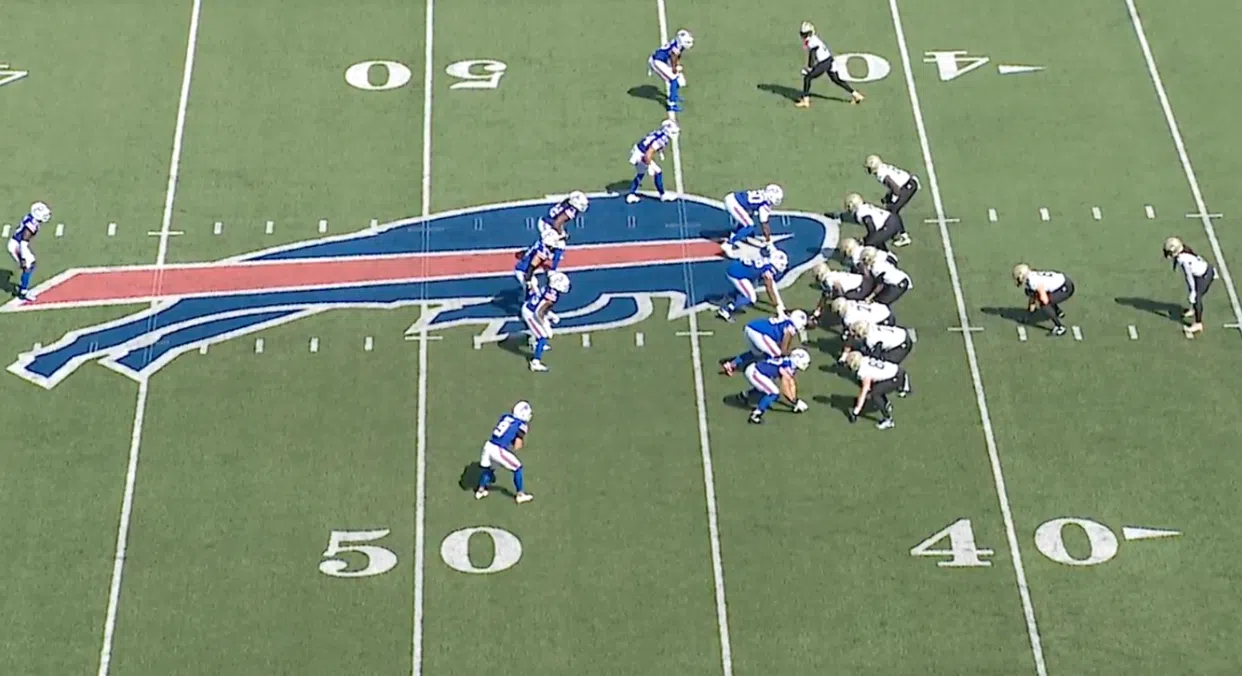
This time, the Saints motion Johnson from the field side to the boundary side on an over motion that turns the field side into the strong side of the play. One more layer is added to the evolution of this look. Again, the Saints run for a modest gain, building the rushing tendency.
New Orleans would run twice more from a 13-personnel look on first down during this game. Each time, they rush for modest gains.
Week 5 – First and 10 against the New York Giants / 13-Personnel – 11-yard run by Kamara
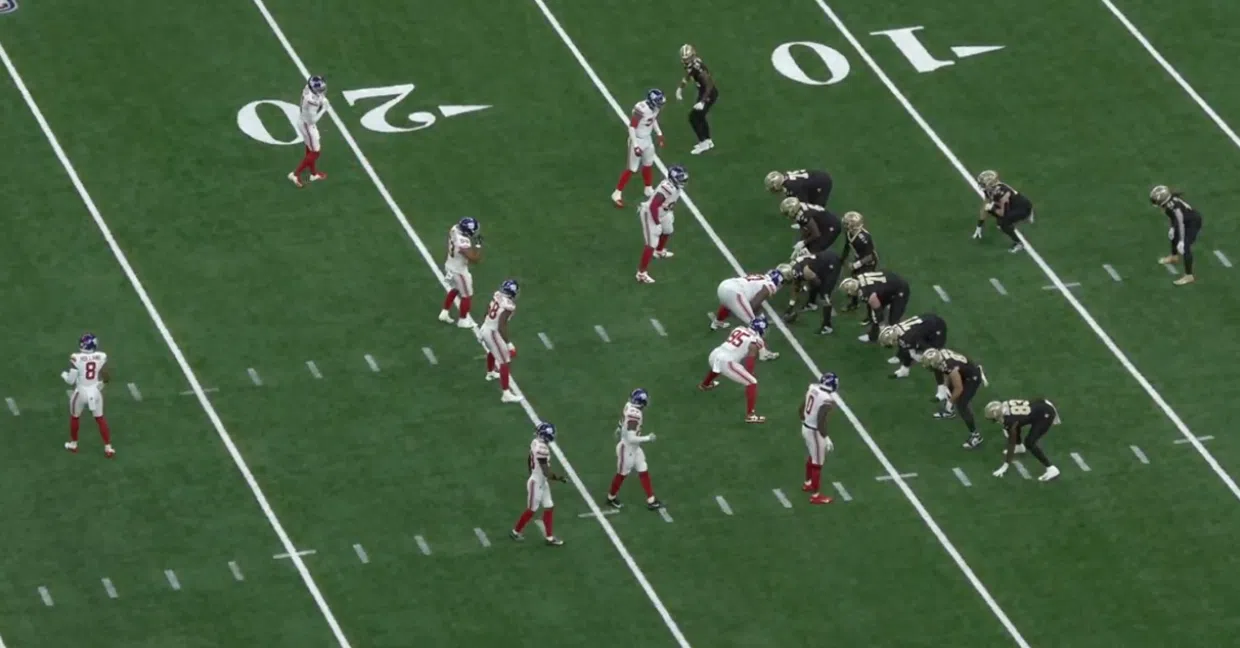
Even before the Saints’ let loose their big play, they appeared in similar looks twice. Once seen above for an 11-yard rush by Kamara. The new wrinkle here was the pre-snap movement.
Again, there was motion here, but it was a “return” motion, so Johnson begins to move from one side of the line to the other but reverses field behind the quarterback and then returns to his original position. That leaves the post-motion look being the same as the pre-motion look.
At the snap, the run play goes to the weak side behind Stoll (at fullback) and wide receiver Devaughn Vele.
Week 5 – First and 10 against the Giants / 13-personnel – 87-yard touchdown completion to wide receiver Rashid Shaheed
Pre-Motion Look
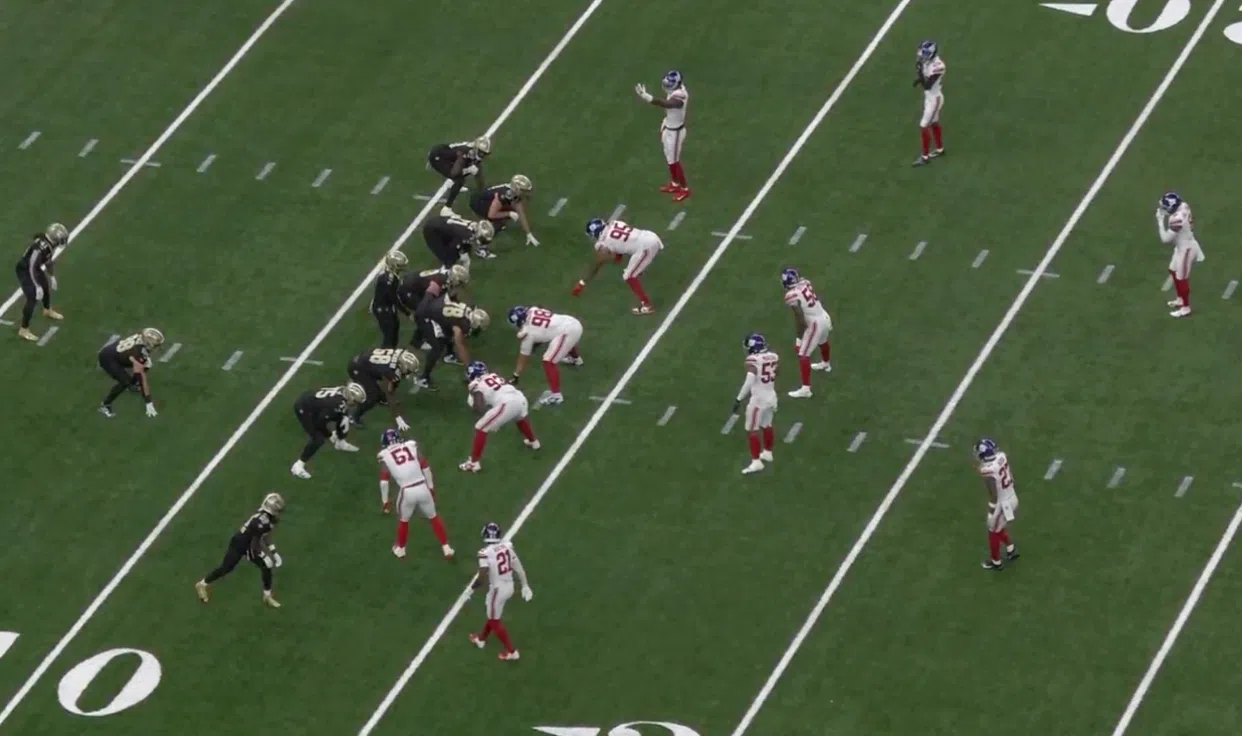
Now, it’s time for the culmination of all of this tendency-building. After six straight runs out of three-tight end sets on first downs, the Saints got aggressive and called up this two-man route for the longest regular season touchdown since 2016.
The look is slightly different this time. The tandem of tight ends, this time including Foster Moreau, are on the field side while Shaheed is on the boundary side lined up tighter to the formation than previous pre-snap pictures. But then, the Saints change up the look entirely with motion.
Post-Motion Look
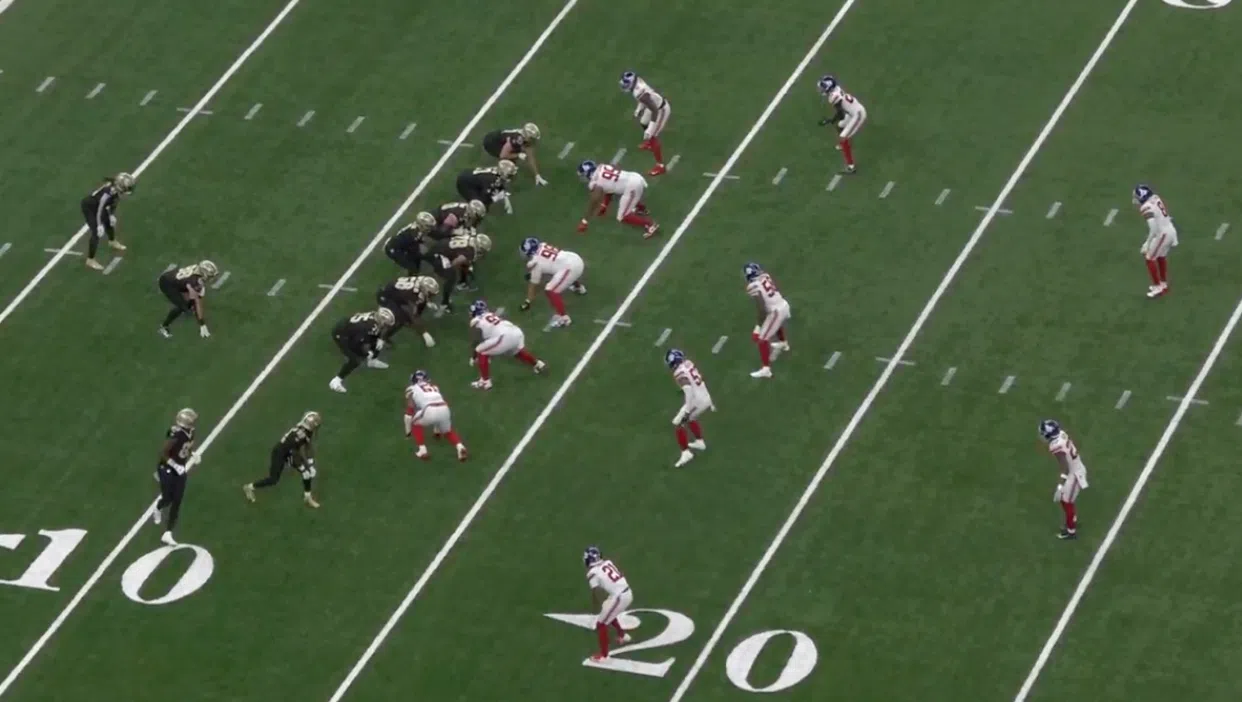
After another over motion by Johnson, both he and Shaheed are set on the tighter boundary side. At the snap, the entire Giants front gets aggressive and bites down on the run. However, the Saints have built in a play action here to build off of the rushing habits they’ve shown before. The sell on the play action is effective and now it’s up to the offensive line to hold and Shaheed to win downfield.
Shaheed Wins
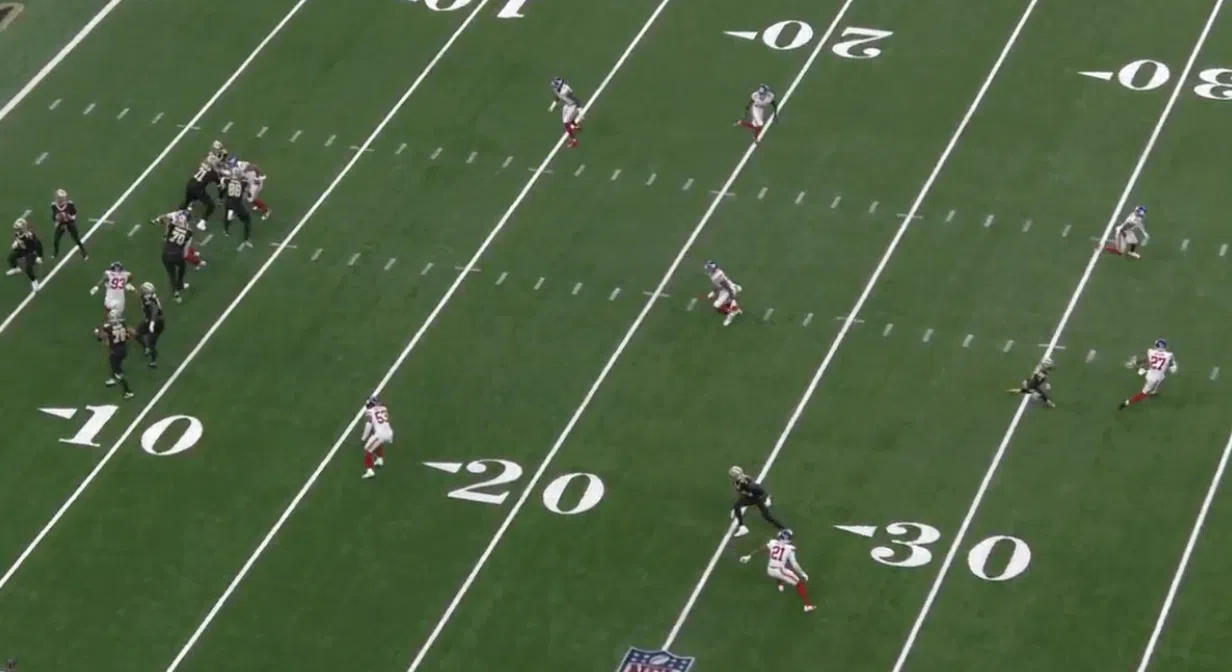
As he always does well, Shaheed does indeed win. Thanks to the line holding up long enough, Shaheed forces the coverage safety (No. 27 – Tyler Nubin) to flip his hips inside by selling an inside break at the top of his route. Once Nubin commits to midfield, Shaheed breaks outside and creates space as Rattler lets his pass fly.
Perfect Placement
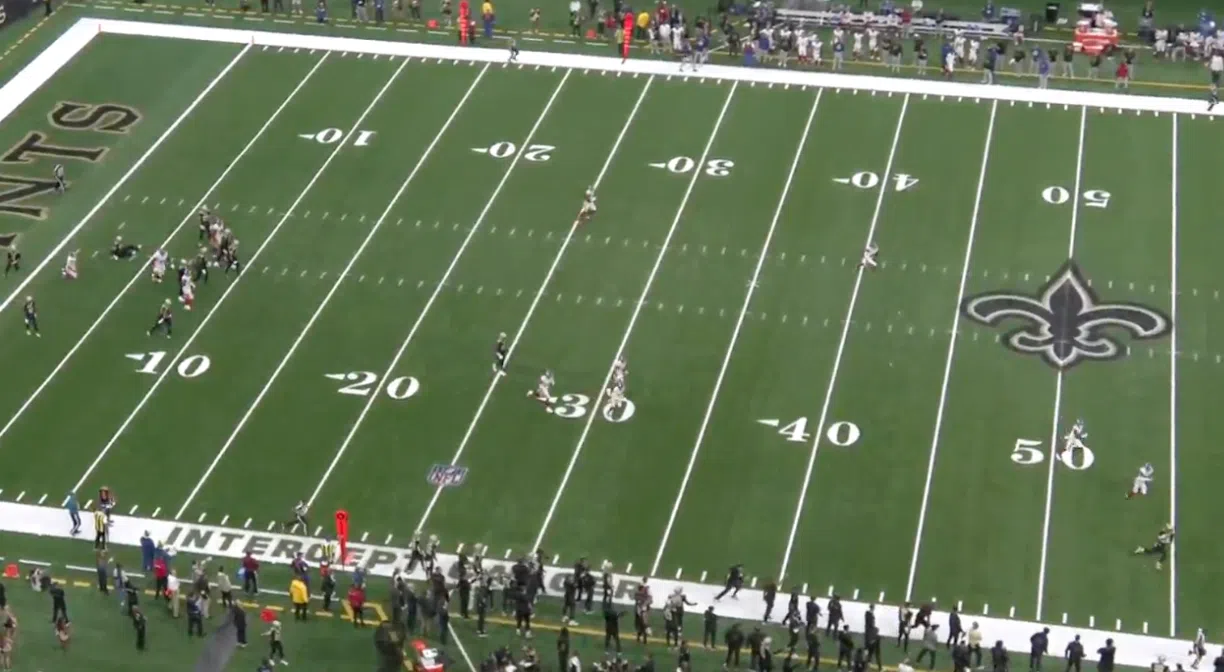
“It’s hard to overthrow (Shaheed),” Rattler said after the game.
And he proved that on this one, Shaheed gets under the ball, which is placed far to the outside, where only Shaheed could have gotten to it. The receiver reels it in and runs into the end zone.
The play went down as the longest for the Saints in years and also holds up now as Rattler’s longest career pass and Shaheed’s longest career reception.
The NFL game is a chess match that takes place not just over the course of four quarters, but seventeen games. Building and breaking tendencies is a must in order to outsmart opponents. This through line of 13-personnel usage on first downs is a perfect example of exactly that.

More New Orleans Saints
